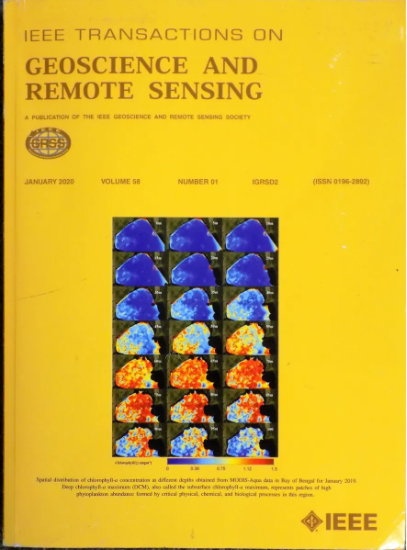Remote Sensing Scene Classification via Pseudo-Category-Relationand Orthogonal Feature Learning
IF 7.5
1区 地球科学
Q1 ENGINEERING, ELECTRICAL & ELECTRONIC
IEEE Transactions on Geoscience and Remote Sensing
Pub Date : 2025-01-20
DOI:10.1109/TGRS.2025.3531927
引用次数: 0
Abstract
Remote sensing (RS) scene classification is a crucial component in the analysis of Earth observation data, aiding in a deeper understanding and monitoring of our dynamic planet. Its applications extend across various fields, including land management, urban analysis, and environmental monitoring. The complex semantic information in RS scene images and the relationships between different scene categories present significant challenges to improving scene classification tasks. Unlike previous methods that only focus on network structure or feature encoding, our approach emphasizes the association of scene categories, integrating feature learning and knowledge transfer together to enhance the analysis of scenes at a higher semantic level. To this end, we propose an RS scene classification scheme based on pseudo-scene category-relation reasoning and orthogonal feature (OF) learning modules, capturing the inherent semantic connections among diverse scene classes. Additionally, we introduce cascaded attention (CA) and selected separation modules to strategically optimize the network, targeting challenging classes with high feature similarities. Knowledge is then distilled across different branches, guiding to enhance the model’s robustness and prediction accuracy. Experiments are conducted on three challenging RS scene datasets of AID30, UCMerced21, and NWPU-RESISC45 to validate the effectiveness of the learned pseudo-category relationships. The results demonstrate that the proposed framework outperforms existing hierarchical approaches in leveraging the hierarchical structure of RS scene images.基于伪范畴关系和正交特征学习的遥感场景分类
本文章由计算机程序翻译,如有差异,请以英文原文为准。
求助全文
约1分钟内获得全文
求助全文
来源期刊

IEEE Transactions on Geoscience and Remote Sensing
工程技术-地球化学与地球物理
CiteScore
11.50
自引率
28.00%
发文量
1912
审稿时长
4.0 months
期刊介绍:
IEEE Transactions on Geoscience and Remote Sensing (TGRS) is a monthly publication that focuses on the theory, concepts, and techniques of science and engineering as applied to sensing the land, oceans, atmosphere, and space; and the processing, interpretation, and dissemination of this information.
 求助内容:
求助内容: 应助结果提醒方式:
应助结果提醒方式:


